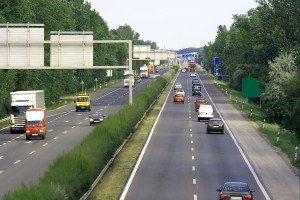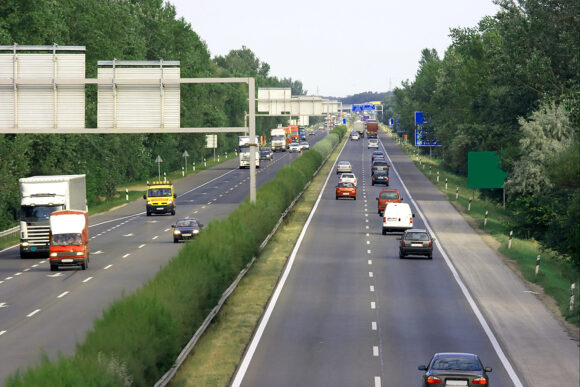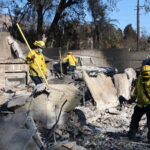Kansas City, Kansas tops the chart for the first time ever as the safest driving city in America according to the eleventh annual “Allstate America’s Best Drivers Report.” The report, based on Allstate Insurance Company claims data, ranks America’s 200 largest citiesi in terms of car collision frequency to identify which cities have the safest drivers. The report underscores Allstate’s commitment to keeping roadways safer.
Kansas City, Kansas, is recognized as the safest driving city in America with the average driver experiencing an auto collision every 13.3 years, which is 24.8 percent less likely than the national average of every 10 years.
“By providing this information annually, Allstate and our agency owners across the country strive to bring drivers and communities together to talk about driving safety and consider solutions to keep our roads safer,” said Jim Ledder, vice president of auto claims, Allstate. “By spotlighting the cities with strong driver safety records and spreading the word about practical steps drivers can take, we’re continuing to help protect people from life’s uncertainties and prepare them for a more secure future.”
Recently, the National Safety Council estimated the U.S. is on track for its deadliest driving year since 2007. For the first six months of 2015, NSC reported traffic deaths are up 14 percent from a year ago, and serious injuries are 30 percent higher over the same period. While there are many factors that impact highway safety, an improving economy and lower gas prices have led to an increase in the number of miles being driven. The Federal Highway Administration’s latest Traffic Volume Trend Report says cumulative travel for 2015 is up by 3.5 percent.iii The June report is based on hourly traffic count data reported by the states, using data collected at approximately 4,000 continuous traffic counting locations nationwide.
The top ten cities according to the Allstate America’s Best Drivers Report:
| 11th Annual Allstate America’s Best Drivers Report Top 10 Safest Cities | ||
| City & Overall Ranking | Collision Likelihood Compared to National Average | Average Years Between Collisions |
| 1. Kansas City, Kan. | 24.8% less likely | 13.3 |
| 2. Brownsville, Texas | 24.6% less likely | 13.3 |
| 3. Boise, Idaho | 23.5% less likely | 13.1 |
| 4. Fort Collins, Colo. | 21.1% less likely | 12.7 |
| 5. Cape Coral, Fla. | 21.0% less likely | 12.7 |
| 6. Madison, Wis. | 18.2% less likely | 12.2 |
| 7. Cedar Rapids, Iowa | 15.1% less likely | 11.8 |
| 8. Laredo, Texas | 14.7% less likely | 11.7 |
| 9. Huntsville, Ala. | 14.7% less likely | 11.7 |
| 10. Cary, N.C. | 13.8% less likely | 11.6 |
New this year, the report provides information about a notable factor in collisions – braking habits – in approximately 100 cities nationally. Allstate pulled data from its Drivewise offering, an innovative technology that allows consumers to monitor their driving habits to improve safety and gain rewards on their insurance, to determine braking trends. A hard braking event is defined as slowing down eight miles per hour or more over a one-second time interval.
Allstate found a correlation between hard braking and collision frequency. Cities with higher collision frequency also recorded more hard braking events. Nationally, on average, a driver will experience 16 hard braking events for every 1,000 miles driven. Here are the cities with drivers who experience the least amount of hard braking events per 1,000 miles driven:
| Drivewise Hard Braking Events (Cities’ drivers with the least events per 1,000 miles) |
|
| Des Moines, Iowa | 6.8 |
| Madison, Wis. | 8.1 |
| Wichita, Kan. | 9.4 |
| Milwaukee, Wis. | 10.3 |
| Chesapeake, Va. | 11.1 |
| Overland Park, Kan. | 11.3 |
| Vancouver, Wash. | 11.9 |
| Omaha, Neb. | 11.9 |
| Minneapolis, Minn. | 12.4 |
| Hampton, Va. | 12.6 |
In addition to the traditional collision frequency rankings, two unique rankings among the top 200 largest cities are featured in the 2015 report. These location factor rankings include population density and precipitation, and show how some cities’ rankings can change when taking these challenging roadway conditions into consideration.
| Cities with Top Rankings When Factoring in Population Density |
| 1. Boise, Idaho |
| 2. Fort Collins, Colo. |
| 3. Madison, Wis. |
| 4. Brownsville, Texas |
| 5. Laredo, Texas |
| 6. Cary, N.C. |
| 7. Kansas City, Kan. |
| 8. Cape Coral, Fla. |
| 9. Milwaukee, Wis. |
| 10. Louisville, Ken. |
| Cities with Top Rankings When Factoring in Precipitation |
| 1. Kansas City, Kan. |
| 2. Cape Coral, Fla. |
| 3. Brownsville, Texas |
| 4. Boise, Idaho |
| 5. Madison, Wis. |
| 6. Huntsville, Ala. |
| 7. Fort Collins, Colo. |
| 8. Port Saint Lucie, Fla. |
| 9. Cary, N.C. |
| 10. Montgomery, Ala. |
For the past 11 years, Allstate actuaries have conducted an in-depth analysis of company claims data to determine the likelihood drivers in America’s 200 largest cities will experience a vehicle collision compared to the national average. Reported property damage claims were analyzed over a two-year period (from January 2012 to December 2013).
A weighted average of the two-year numbers determines the annual percentages. The report defines an auto crash as any collision resulting in a property damage claim. Allstate’s auto policies represent nearly 10 percent of all U.S. auto policies, making this report a realistic snapshot of what’s happening on America’s roadways.
Source: Allstate
Was this article valuable?
Here are more articles you may enjoy.


 Auto Insurer Fined for Data Breach That Impacted 45K New Yorkers
Auto Insurer Fined for Data Breach That Impacted 45K New Yorkers  New Fire Maps Put Nearly 4M Californians in Hazardous Zones
New Fire Maps Put Nearly 4M Californians in Hazardous Zones  Catastrophe Experts Tap AI to Tackle Soaring Insured Losses
Catastrophe Experts Tap AI to Tackle Soaring Insured Losses  Oracle Warns Health Customers of Patient Data Breach
Oracle Warns Health Customers of Patient Data Breach 